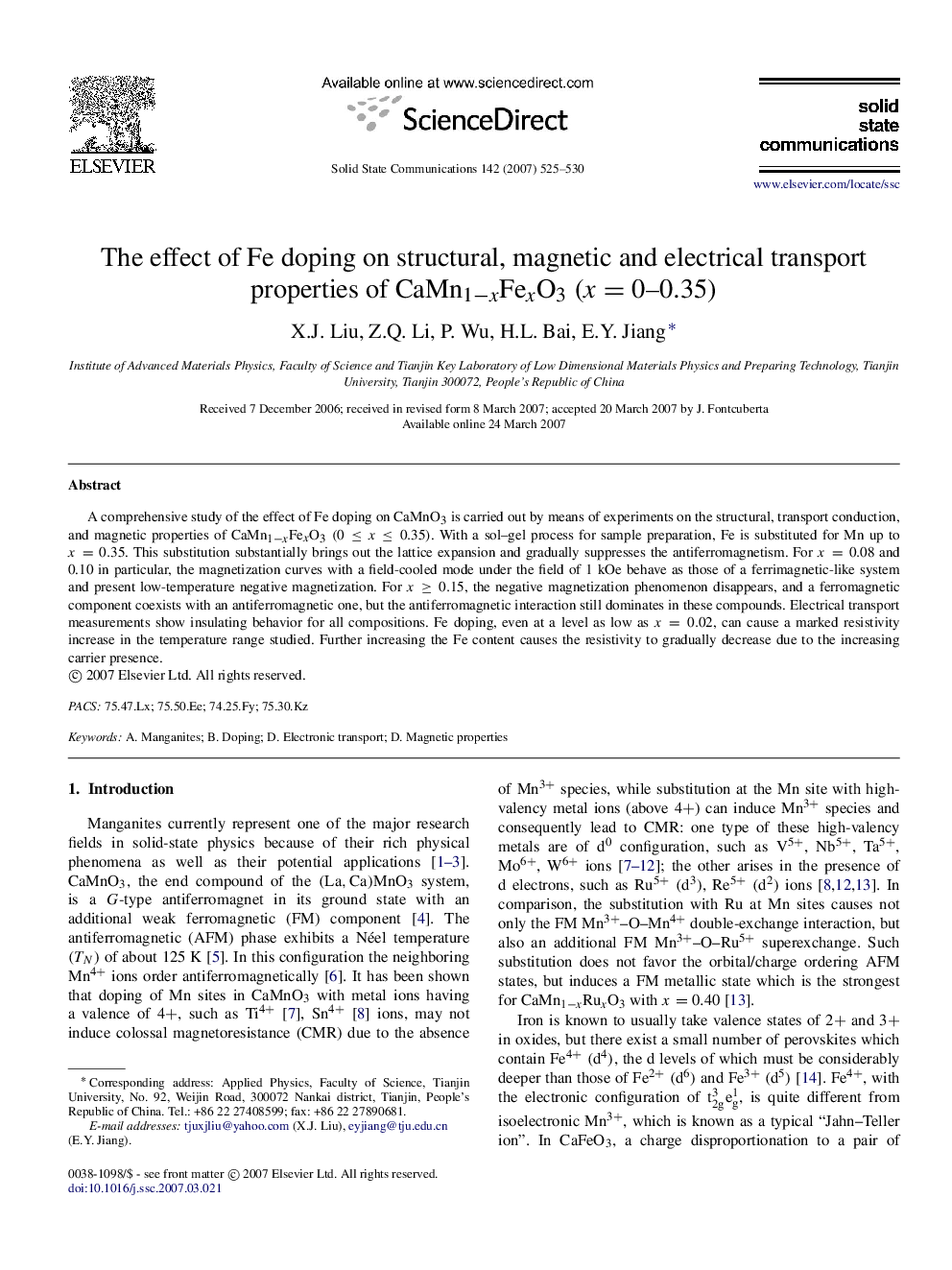| Article ID | Journal | Published Year | Pages | File Type |
|---|---|---|---|---|
| 1595352 | Solid State Communications | 2007 | 6 Pages |
A comprehensive study of the effect of Fe doping on CaMnO3 is carried out by means of experiments on the structural, transport conduction, and magnetic properties of CaMn1−xFexO3 (0≤x ≤0.35). With a sol–gel process for sample preparation, Fe is substituted for Mn up to x=0.35x=0.35. This substitution substantially brings out the lattice expansion and gradually suppresses the antiferromagnetism. For x=0.08x=0.08 and 0.10 in particular, the magnetization curves with a field-cooled mode under the field of 1 kOe behave as those of a ferrimagnetic-like system and present low-temperature negative magnetization. For x≥0.15x≥0.15, the negative magnetization phenomenon disappears, and a ferromagnetic component coexists with an antiferromagnetic one, but the antiferromagnetic interaction still dominates in these compounds. Electrical transport measurements show insulating behavior for all compositions. Fe doping, even at a level as low as x=0.02x=0.02, can cause a marked resistivity increase in the temperature range studied. Further increasing the Fe content causes the resistivity to gradually decrease due to the increasing carrier presence.
